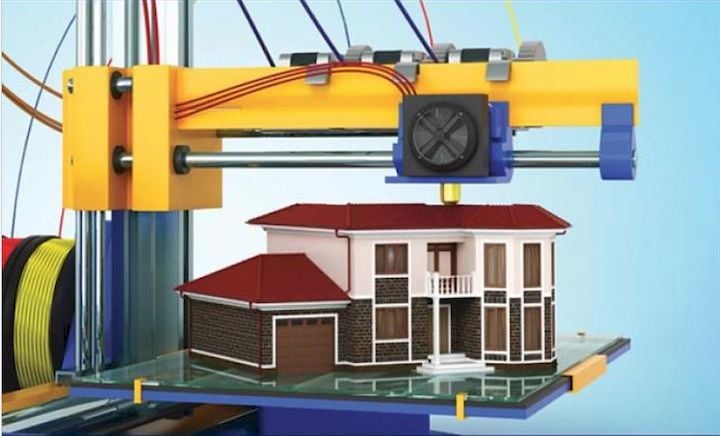![3D Printing of Concrete [Source: Amazon]](https://fabbaloo.com/wp-content/uploads/2020/05/image-asset_img_5eb093fa2d3ec.jpg)
This week’s selection is “3D Printing of Concrete: State of the Art and Challenges of the Digital Construction Revolution” by Arnaud Perrot.
The idea of concrete 3D printing isn’t exactly new, yet it is in a way. Today we see several commercial ventures attempting (and in some cases, failing) to produce what’s known as concrete 3D printers or, as we sometimes refer to them, “construction 3D printers”.
These are devices that have scaled up the 3D printing concept to building-sized operations that can precisely deposit concrete according to a digital 3D model. In many respects this discipline is quite similar to desktop or industrial 3D printing, but there are some notable differences beyond the mere size of the prints.
The uninitiated might think that “concrete” is a relatively simple, well understood material. But in fact it is quite a challenging material, and today there are companies that provide on-site testing services to ensure that a particular concrete mix meets the requirements.
The requirements are that the concrete has a certain degree of “slump”, that it is mixed at the proper temperature, and other factors. All of these lead to a sufficiently strong solid concrete structure when the concrete cures. If improper concrete mixes are used, then the resulting building or structure’s strength could be compromised.
That’s a definite no-no when it comes to buildings, where people’s very lives depend on the correctness of the concrete mix. Concrete must not only be strong initially, but last for perhaps decades.
A Revolution in Construction from 3D Printing?
That’s the environment facing the makers of concrete 3D printers, except that it’s even more complex when you add in the 3D printing part.
As an observer of this “revolution”, I am encouraged by those now venturing into the concrete 3D printing space. However, these ventures are mostly quite rudimentary, as they tend to be small, overly expensive operations that produce relatively conservative designs. I’m pretty certain there is a lot more creativity that could potentially be unleashed by fully leveraging 3D printed concrete designs.
That’s where this book enters. It turns out there is now considerable research into the workings of concrete 3D printing underway at various institutions. From this research we may see some very intriguing devices and possibilities in the near future. This book explores a bit of this research.
The first portion of the book explores the current state of 3D printing, explaining the difference between extrusion and deposition approaches, for example, or “injection into a particle bed”, which is one of several approaches for 3D printing concrete materials.
The book proceeds by explaining several different techniques for extrusion and casting, a common approach for concrete 3D printing: instead of 3D printing the concrete, just 3D print a mold and cast the concrete.
Mechanical Strength of Concrete 3D Printing
There is an entire chapter devoted to the mechanical behavior of concrete materials, which, as I explained above, are critical to the success of any concrete construction project. In particular, the author explores how strength is changed by different methods of 3D printing, in a way that is analogous to the comparison of a 3D printed thermoplastic part to an injection molded version.
The Future of Concrete 3D Printing
The final chapter talks to the possibilities of new designs and approaches enabled by the existence of concrete 3D printing. This is the part of most interest to me, as 3D printing has revolutionized several industries already, and there is no reason the same cannot be done in the construction industry.
Via Amazon











This week’s selection is “3D Printing Projects” by Dorling Kindersley, a.k.a. “DK”.